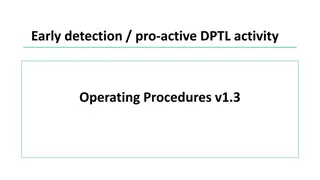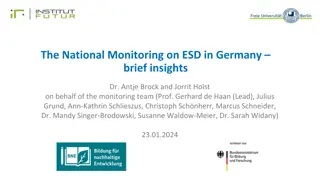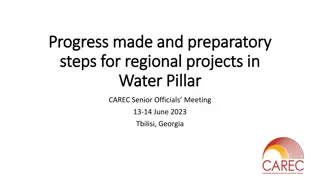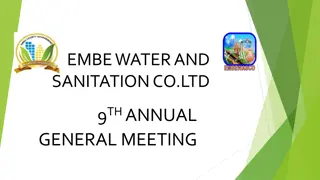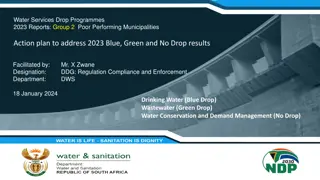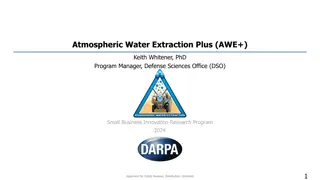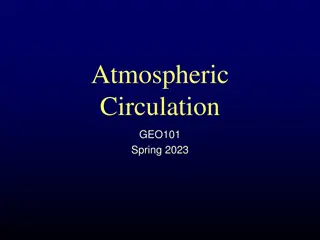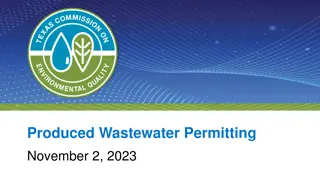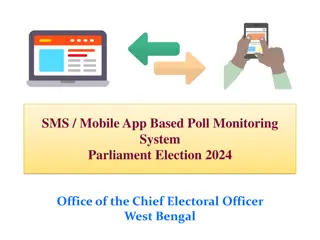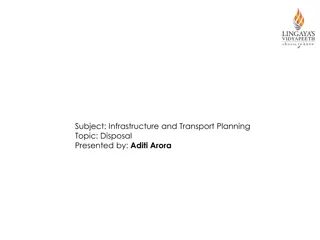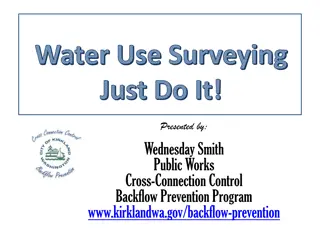
Water Quality & Discharge Monitoring - Kloudgin
Explore comprehensive water quality monitoring solutions for effective management, testing, and tracking. Enhance your water quality with KloudGin.
Download Presentation
Please find below an Image/Link to download the presentation.
The content on the website is provided AS IS for your information and personal use only. It may not be sold, licensed, or shared on other websites without obtaining consent from the author. Download presentation by click this link. If you encounter any issues during the download, it is possible that the publisher has removed the file from their server.
Presentation Transcript
The Importance of Water Quality Monitoring Water the lifeblood of our planet sustains ecosystems, nourishes communities, and quenches our thirst. But how do we ensure that this precious resource remains safe, clean, and abundant? The answer lies in water quality monitoring. Understanding Water Quality Monitoring: Water quality monitoring involves a systematic and planned series of measurements or observations. These data points are meticulously analyzed and reported to generate information and knowledge about the health of water bodies, catchments, and the environment. Let s delve into why water quality monitoring matters: 1.Health of Waterways: oMonitoring provides insights into the well-being of rivers, lakes, and oceans. It helps us detect changes in water quality caused by pollution, sedimentation, or other factors. oBy assessing parameters such as pH, dissolved oxygen, turbidity, and nutrient levels, we can identify potential threats to aquatic ecosystems. 2.Catchment Management: oCatchments the areas that drain into a water body play a crucial role in maintaining water quality. water quality management Monitoring helps us understand how land use, agriculture, and urban development impact water resources. oArmed with this knowledge, policymakers can implement effective strategies to protect catchments and prevent contamination. 3.Safe Drinking Water: oRegular water quality testing is essential for ensuring the potability of drinking water. It validates the safety of water supply systems and detects any deviations from acceptable standards. oMonitoring also aids in investigating disease outbreaks related to waterborne pathogens. 4.Operational Efficiency: oWater supply systems rely on valves, pumps, and pipelines. Monitoring their performance ensures smooth operation. oBy tracing the movement of water through the network, operators can quickly locate and address leaks, blockages, or other issues. 5.Preventive Measures: oEarly detection of pollutants allows for timely interventions. Whether it s industrial discharges, agricultural runoff, or sewage, monitoring helps prevent contamination. oImplementing preventive measures safeguards both human health and the environment. Practical Approaches to Water Monitoring: Water monitoring takes various forms, depending on the purpose and context. Here are some practical approaches:
1.Physical Monitoring: oExamining physical properties such as temperature, turbidity, and flow rates. oVisual inspections of water bodies and their surroundings. 2.Chemical Monitoring: oAnalyzing chemical constituents like nutrients, heavy metals, and organic pollutants water quality testing. oEnsuring compliance with water quality standards. 3.Biological Monitoring: oStudying aquatic organisms (fish, algae, invertebrates) as indicators of ecosystem health. oBioassays to assess toxicity levels. 4.Remote Sensing and Technology: oSatellite imagery and sensors provide real-time data on water quality. oAutomated monitoring stations collect continuous information. The Role of Stakeholders: Water quality monitoring is a collaborative effort involving governments, research institutions, NGOs, and local communities. water quality tracking By sharing data, expertise, and resources, we can safeguard our water resources for generations to come. In conclusion, water quality monitoring isn t just about numbers and graphs; it s about safeguarding our planet s most vital resource. Let s continue to monitor, protect, and cherish our waterways one drop at a time.


